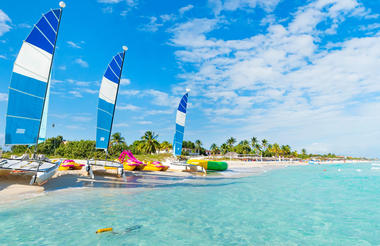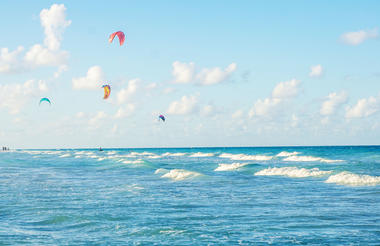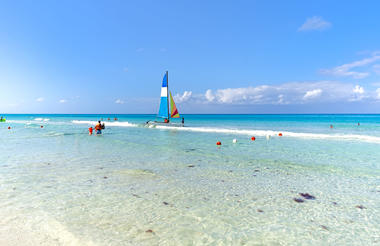As the capital of Cuba, Havana is a remarkably vast, sprawling metropolis. The city’s compelling history is reflected in the astonishing diversity of its architecture, its multicultural inhabitants, and its exotic and eclectic cuisine. The Old Town remains a remarkably well-preserved colonial centre. It is characterised by an exquisite hotchpotch of architectural styles, of opulence and decay, socialism and capitalism, the past and the present. Imperial mansions have been converted into modern tenement buildings, government agencies find homes in eighteenth-century convents and the nostalgic classic American cars for which the city is known share Havana’s lively streets with the latest models of BMW and Mercedes. While the UNESCO-funded restoration programme has introduced a modicum of modernity into the city, Havana has managed to retain its wonderfully quirky cultural heritage, its unique character, and its undeniable charm.
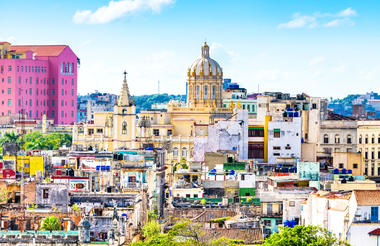
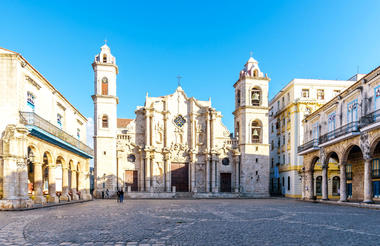
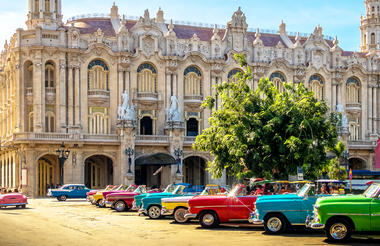
Cienfuegos is a small port city in the Central Cuban province of the same name. This attractive destination was founded in 1819 by French settlers, whose influence remains evident in the art nouveau and art deco building styles. The city overlooks a magnificent bay, where immaculate coral reefs provide excellent opportunities for diving, sailing and even swimming with the dolphins, as well as sunbathing and swimming from the gorgeous beach. Nature lovers can look forward to exploring captivating hidden caves, enthralling waterfalls, and beautiful natural pools and hot springs. The UNESCO-listed historic city centre is home to an impressive array of sights. Must-sees include the Casa del Fundador (Founder's House); the Nuestra Señora de la Purísima Concepción (Our Lady of the Immaculate Conception) Cathedral; the Tomás Terry Theater; and the grand Ferrer Palace.



Topes de Collentes is a nature lovers’ paradise: a small settlement surrounded by an exquisite nature reserve in the remote Escambray Mountain Range of central Cuba. Local attractions include medicinal mud baths, horse-back riding, hiking trails to the Salto del Caburni; one of the most popular hiking trails through coffee plantations ending in a spectacular waterfall which cascades into rock pools on the Caburni River. The Labatata, three kilometres from the city centre, is an underground river-cave system with several levels of rock pool. Parque la Represa is a large park featuring an arboretum with more than three hundred exotic tree species. Art lovers should not miss the Museo de Arte Cubano, containing a spectacular collection of post-modern and impressionist Cuban artworks and sculptures.



Sancti Spiritus, the capital city of the eponymous Cuban province, is one of Cuba's seven original Spanish towns. It's a peaceful little town where bicycles and horse-drawn taxis comprise much of the traffic and where the friendly locals socialise in the central plaza in the evenings. The town is set on the banks of the Yayabo River, and its narrow, winding streets are lined with countless Spanish colonial buildings, many of which have been remarkably well restored. Among the most notable of the city's constructions are the Spanish Baroque style Iglesia Parroquial Mayor, the 1876 Teatro Principal, and the Yayabo Bridge with its medieval roman appearance. Other must-see attractions include the Parque Serafín Sánchez, a large public square in the city centre surrounded by neoclassical buildings and an impressive library, and the nearby Embalse Zaza, Cuba's largest artificial lake.



Set in beautiful Cuba, Varadero offers an uninterrupted 20-kilometre-stretch of white sandy beaches, stunning turquoise sea, colourful rum-filled cocktails and fabulously friendly locals. This elongated island is a relatively exclusive part of Cuba, abundant with private hotel resorts and the country's only full golf course. Varadero even has its own rather wonderfully cheesy Beatles bar complete with live rock music, an energetic atmosphere and life-size statues of the famous four standing guard at its front door. Whether you choose to marvel at the wildlife at the Varahicacos Ecological Reserve, stroll down the makeshift bar strewn walkways of Josone Park, or plonk yourself down in the sun on a deck chair with a mojito, this island paradise is a great place to take a break from the hustle and bustle of the dusty streets of Cuba.
